Complete Guide to Mini Excavator Attachments and Their Uses

Introduction
Mini excavators are versatile machines that, thanks to a wide range of attachments, can adapt to a multitude of tasks. Whether you are an individual or a professional, selecting the right attachments will help optimize your productivity and accomplish tasks more efficiently. In this comprehensive guide, discover the various available attachments and their specific uses.
1. Quick Couplers, Powertilt, and Tiltrotator
1.1 Quick Couplers

Quick couplers allow for fast attachment changes. They come in mechanical and hydraulic versions.
Main Advantages:
- Time-saving on job sites
- Increased safety during tool changes
- Compatibility with various attachments
- Ease of use
1.2 Powertilt
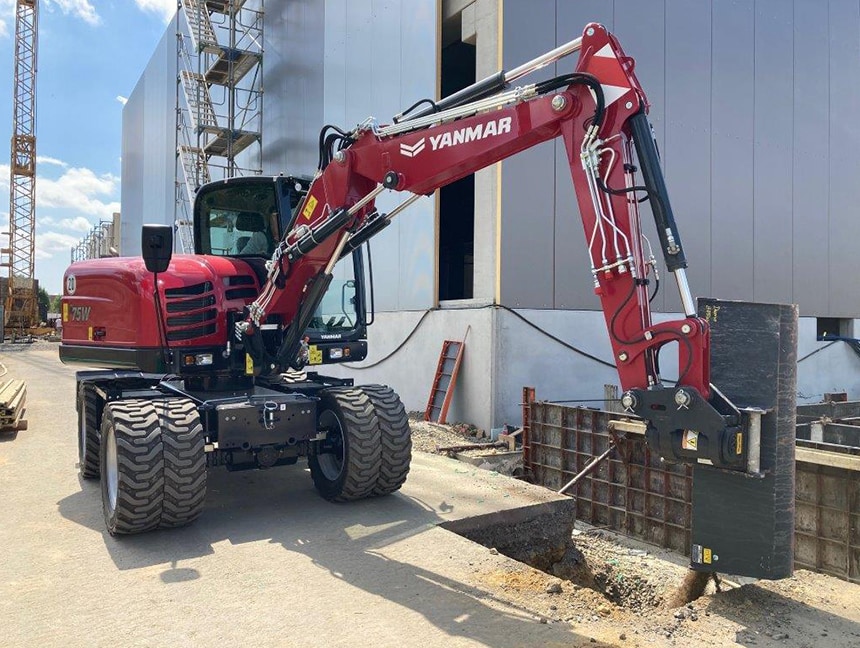
Powertilt allows attachments to tilt up to 180 degrees. This perfect combination merges the benefits of a quick coupler with those of a tilting motor. Powertilt couplers enable more tasks to be completed in shorter timeframes, under safer conditions, ensuring optimal profitability.
Main Advantages:
- Increased productivity and profitability
- Precise excavation
- Slope excavation
- Enhanced tilting range for buckets and tools
1.3 Tiltrotator
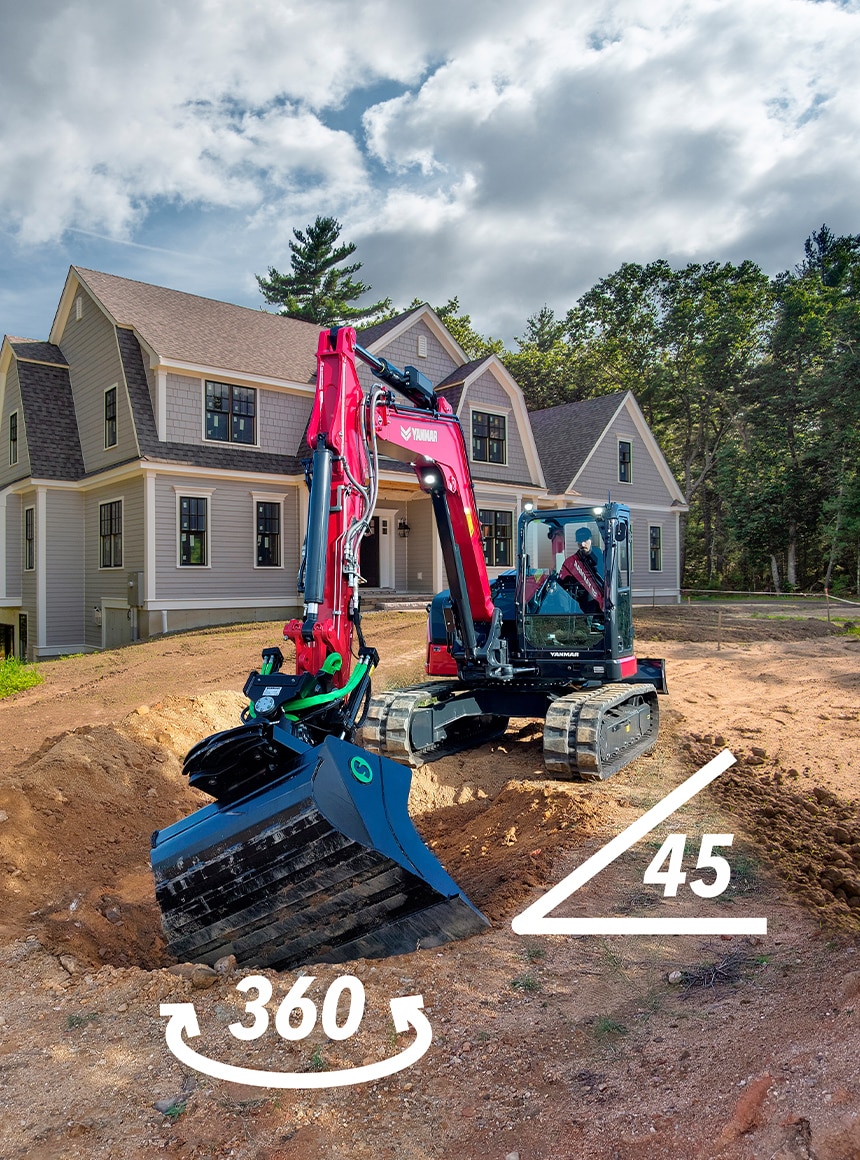
With 360° rotation and 45° tilt in both directions, the tiltrotator significantly enhances the versatility and precision of work. Experienced tiltrotator operators estimate that productivity improvements range between 20% and 35%, depending on the type of work, unlocking the excavator's full potential.
To facilitate handling materials such as pipes, logs, or poles, the tiltrotator can be equipped with a grapple.
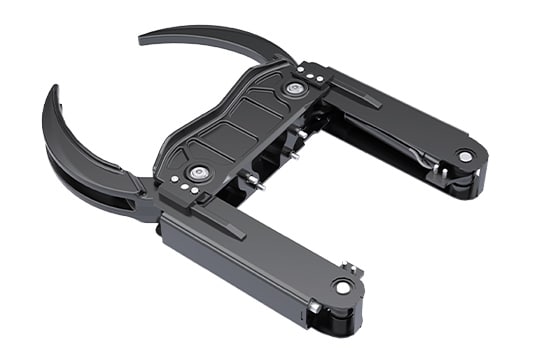
Main Advantages:
- Productivity gain of 20-35%
- Easier handling in difficult areas
- Reduced excavator movement
- Increased efficiency for roadwork and landscaping
- Less wear on your machine due to reduced movement and fuel consumption
- High versatility of use
2. Buckets
Buckets are the most commonly used attachments on mini excavators. Various types exist depending on the work to be performed:
- Excavation and trenching bucket: Used for digging and moving materials (soil, rubble, sand, etc.).
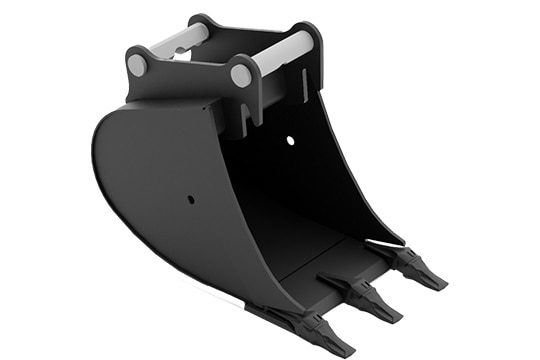
- Ditch cleaning bucket: Wider in size, it allows for leveling and water evacuation. Available in fixed or tilting versions.

- Skeleton bucket: Ideal for separating stones and aggregates, even in water, and for soil recovery.
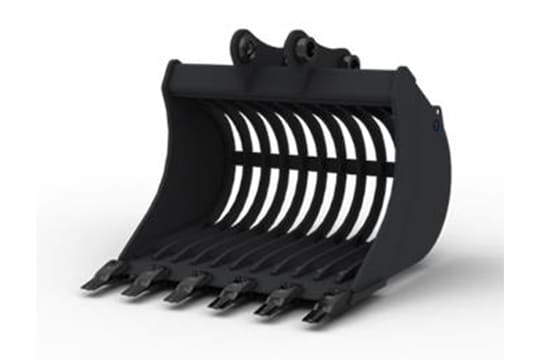
- Grapple bucket: A highly effective tool for situations where material gripping is difficult with a traditional bucket. Two independent claws hold the material against the bucket, making it ideal for loading operations, rock handling, branch collection, or landscaping public spaces. It is powered by the excavator’s auxiliary line, with check valves keeping the claws in position.
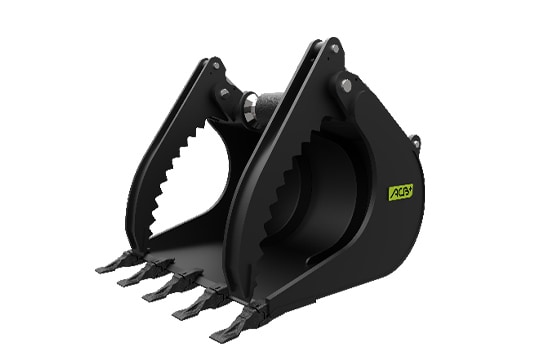
Main Uses:
- Earthmoving
- Leveling
- Trench excavation
- Drainage and sanitation
3. Hydraulic breaker (BRH)
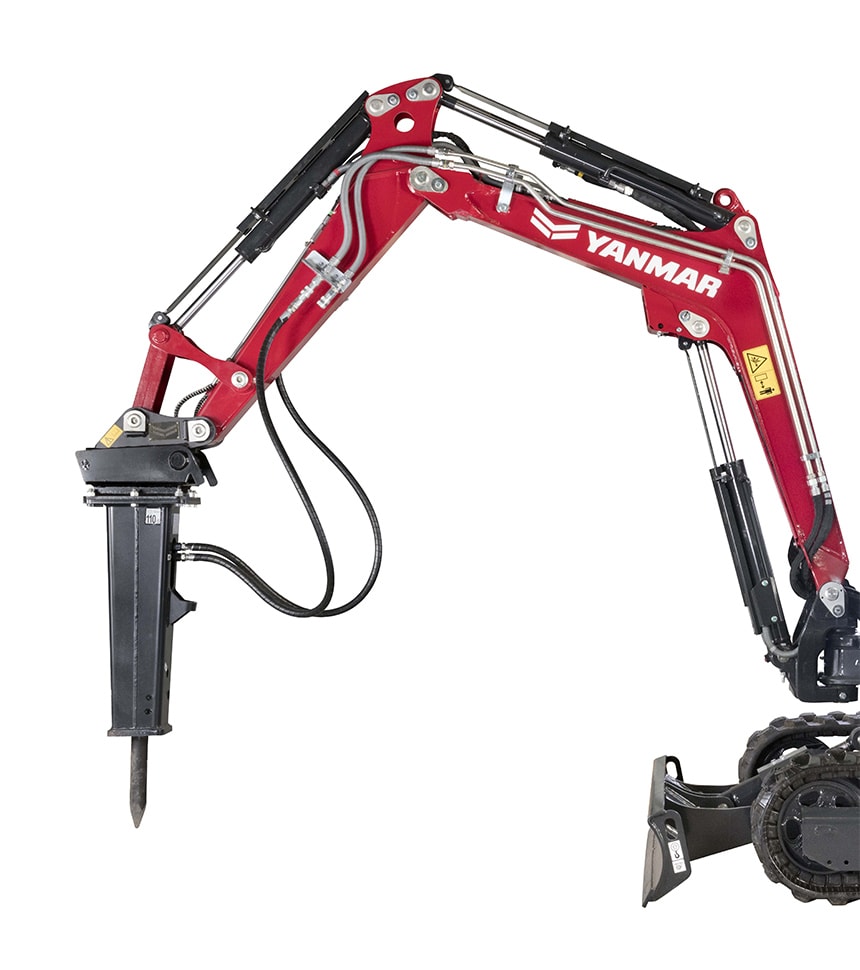
The hydraulic breaker is an essential attachment for demolition. It enables effortless breaking of concrete, rocks, and other hard materials. Several types of hydraulic hammers exist, depending on the required power and material hardness.
Main Uses:
- Demolition of concrete structures
- Reducing stone block sizes for excavation
- Asphalt layer removal for roadworks
4. Auger
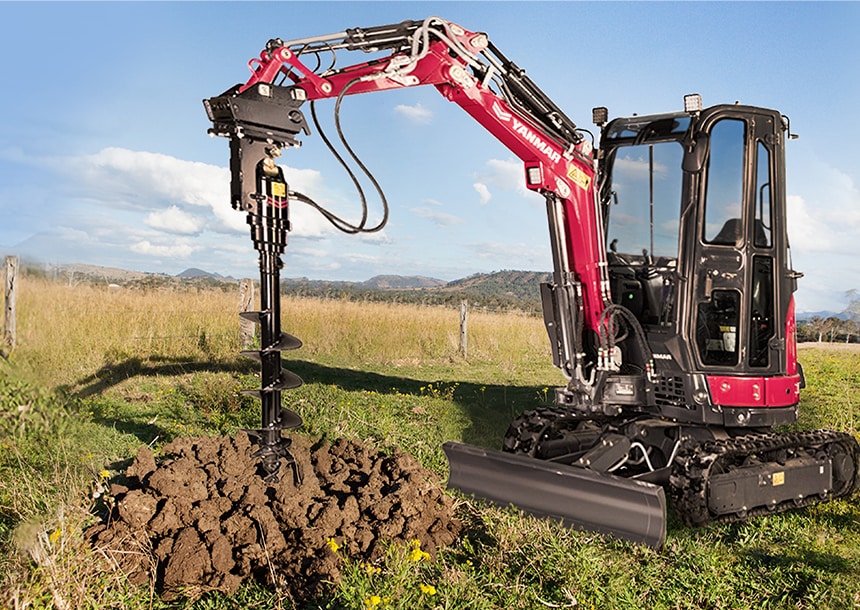
An auger is a drilling tool used to penetrate the ground with precision. Different sizes and diameters of auger bits are available to meet various needs.
Main Uses:
- Tree and post planting
- Fence installation
- Light foundation drilling
- Signpost installation
5. Sorting Grapple
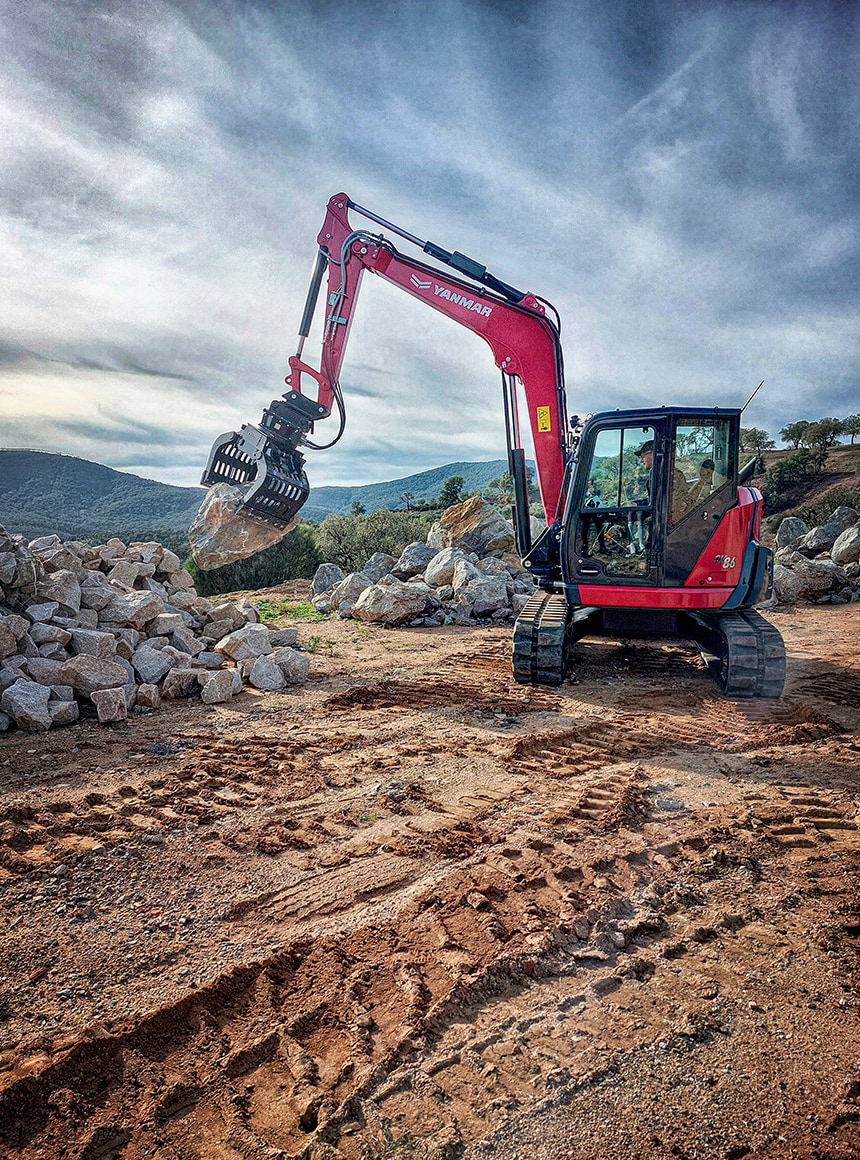
With its strong gripping force and excellent operational agility, the sorting grapple is specifically designed for recycling centers to sort and handle aggregates, iron, or waste.
Versatile, it is particularly useful on sites handling a wide variety of materials in a short time. Thanks to its robust structure, it can also perform light demolition work safely and reliably.
Main Uses:
- Moving stones, tree trunks, and debris
- Loading and unloading materials
- Handling industrial waste
- Forestry work
6. Ripper Tooth
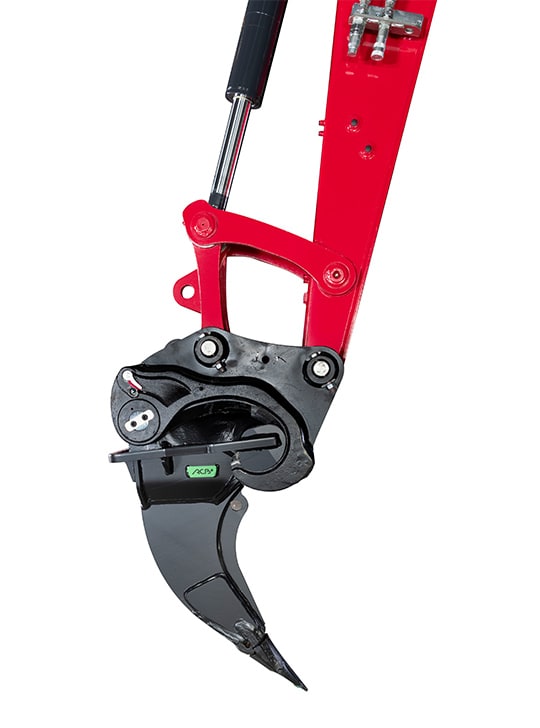
A ripper tooth is used for penetrating and breaking very hard ground. It is ideal for rock breaking, stump removal, and soil loosening.
Ripper teeth increase your excavator’s digging effort as they have a shorter radius than standard buckets. They are equipped with a sharp tooth for optimal penetration, while the rounded rear shape provides leverage for an effective crowbar effect.
Main Uses:
- Soil decompaction
- Root clearing
- Work on frozen ground
- Rock extraction
Conclusion
The choice of attachments for your mini excavator depends on the tasks you need to perform. By selecting the right tools, you will enhance efficiency and speed on your job sites. Whether you are an individual or a professional, consult specialized suppliers to choose the attachments best suited to your needs!